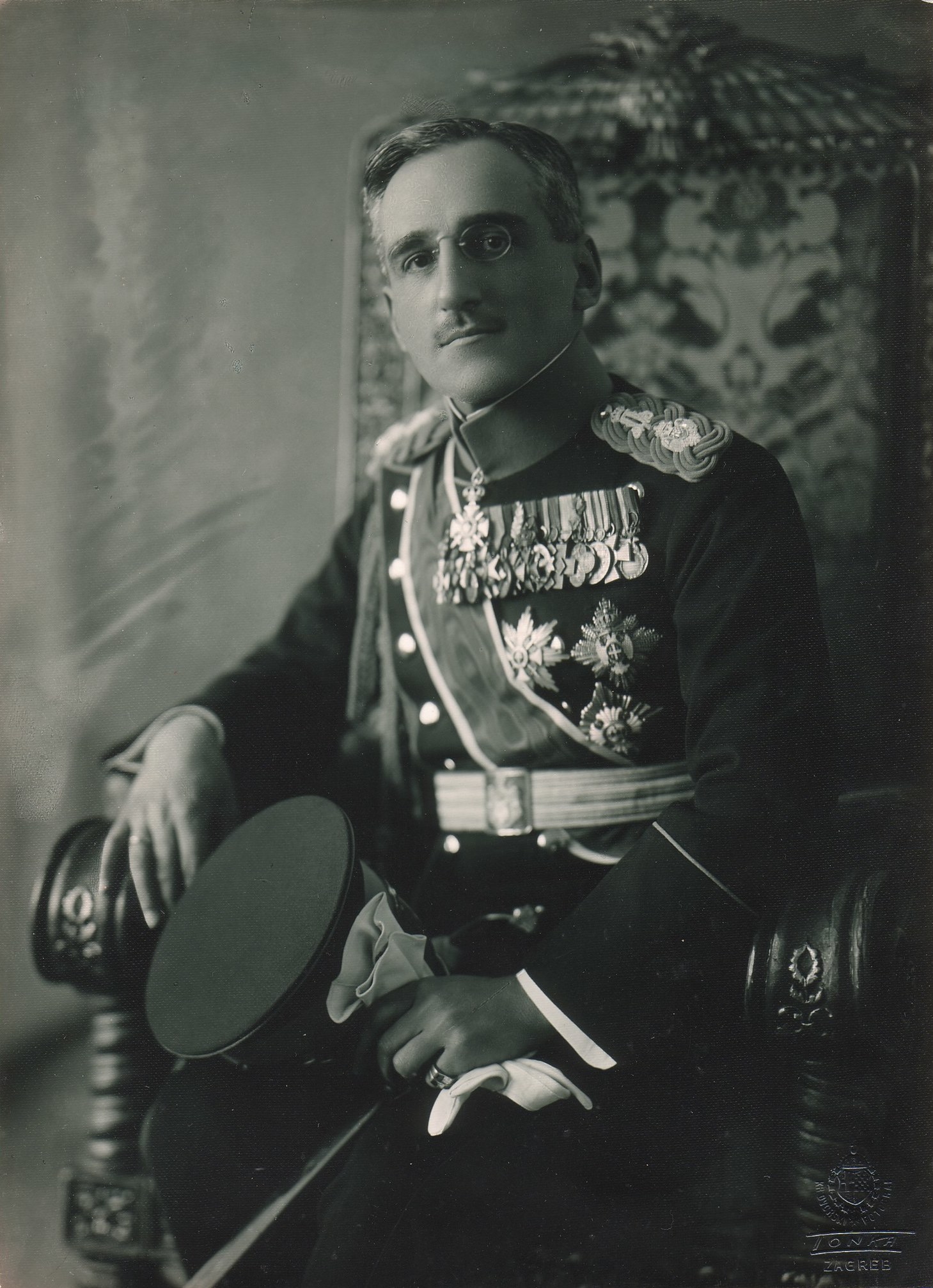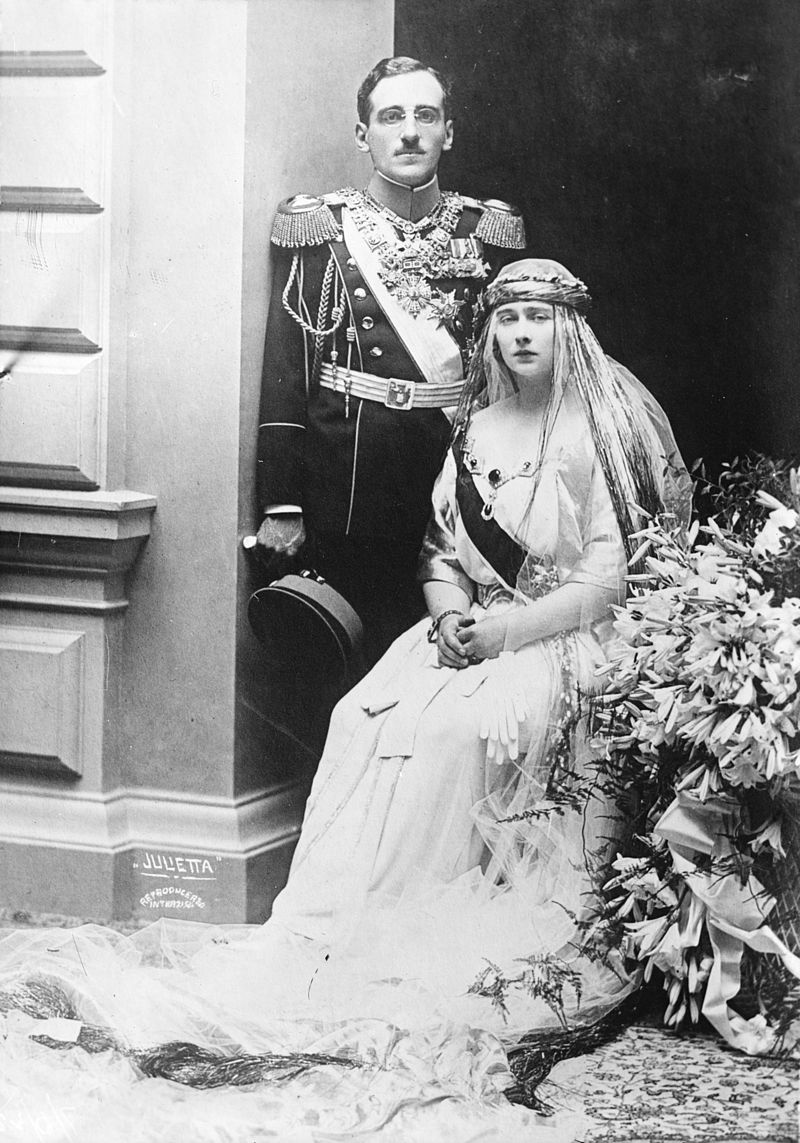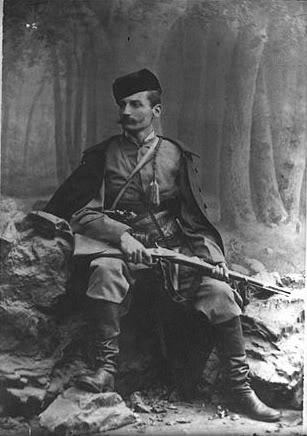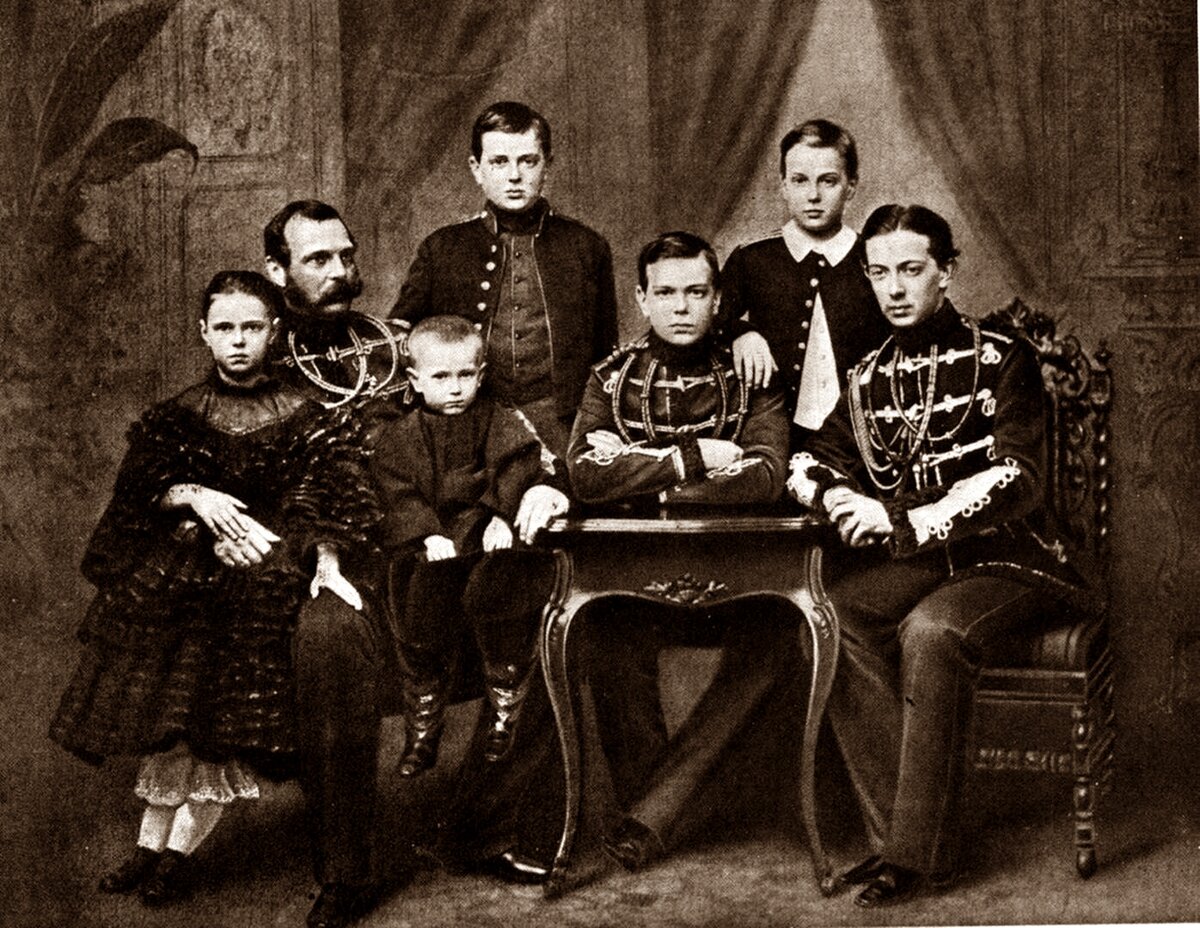by Susan Flantzer

Captain The Honorable Robert Stafford Arthur Palmer; Photo Credit – http://www.winchestercollegeatwar.com
The Honorable Robert Stafford Arthur Palmer, called Bobby in the family, was born on September 26, 1888 at 20 Arlington Street in London, the house of his maternal grandfather, Lord Salisbury. He was given the names of his maternal grandfather Robert Gascoyne-Cecil, 3rd Marquess of Salisbury, three times a Prime Minister, and of his godfathers, Arthur Balfour, also a Prime Minister, and Sir Henry Stafford Northcote, a Governor General of Australia. Bobby’s father also held important positions including being a member of the Privy Council and First Lord of the Admiralty.
In the May of 1902, Queen Alexandra selected Bobby to be one of her pages at the coronation of her husband King Edward VII and herself. Bobby’s maternal aunt Lady Laura Ridding wrote in her biography of him: “Bobby returned home from his morning at Buckingham Palace, full of enjoyment of his experiences and of admiring devotion to the charming Queen whose train-bearer he had been. It was poignant to remember his happy chatter over that day’s doings fourteen years later when, on hearing the news of his being among the “Missing” after the battle of Umm-Al -Hannah, Queen Alexandra sent a touching message of sympathy to his parents, in which she assured them that she ” had always taken the greatest interest in her Coronation pages and that she liked their boy particularly.”
One of the pages in the photo below is Bobby. (Possibly the third from the left)

Alexandra of Denmark with her coronation pages by W. & D. Downey, albumen cabinet card, 9 August 1902, NPG x33258 © National Portrait Gallery, London
From 1902-1907, Bobby attended Winchester College, established in 1382, an independent school for boys in the British public school tradition in Winchester, Hampshire, England. He was Senior Commoner Prefect in 1907 and won the Warden and Fellow’s Prizes for English Verse and Greek Prose and the Duncan Prize for English Historical Essay.
In January 1907 Bobby won a University College Scholarship at Oxford, heading the list as Senior Scholar out of one hundred and fifty-seven candidates. He studied Literae Humaniores, the name given to an undergraduate course focused on Classics (Ancient Rome, Ancient Greece, Latin, ancient Greek and philosophy) at Oxford and other universities. In 1911, Bobby became president of the Oxford Union, a debating society in the city of Oxford, England, whose membership is drawn primarily from the University of Oxford. Bobby was a skilled and respected orator, and his friends nicknamed him “the future Prime Minister.” In 1911, he visited India and on his return was persuaded by his friends to publish a record of his journey under the title “A Little Tour in India.”
Having passed his Bar examinations, Bobby began his legal career as the pupil of Mr. Howard Wright at 11 New Square, Lincoln’s Inn, in the same chambers that his grandfather, Lord Chancellor Selborne, had occupied for nearly forty years in the previous century. In November of 1913, Bobby was called to the bar.
Prior to the start of World War I, Bobby had served with the 6th Battalion Hampshire Regiment, his county territorial battalion, and went with them to India in October of 1914. In August of 1915, Bobby and his regiment left India for Basra, then in Mesopotamia in the Ottoman Empire, now in Iraq, to relieve the garrison at Kut-el-Amara and participated in the Siege of Kut Al Amara. Bobby wrote many letters home which were printed for private circulation with the title “Letters from Mesopotamia: from Robert Palmer.”
Bobby wrote to his father of the terrible conditions: “This battalion when we arrived here was nominally nearly 300 strong, but actually it could hardly have paraded 100. This reduction is nearly all due to sickness. The deaths from all causes only total between forty and fifty, out of the original 800, and of these about twenty- five, I think, were killed in action. But there has been an enormous amount of sickness during the hot weather, four-fifths of which has been heat stroke and malaria. There have been a few cases of enteric and a certain number of dysentery ; but next to heat and malaria more men have been knocked out by sores and boils than by any disease. It takes ages for the smallest sore to heal. Of the original thirty officers, eight are left here, and Major Stilwell, who is Commanding Officer.”
Written on January 7, 1916: “We started at 8.30 and marched quietly about five miles. This brought us within view of the large village of Sheike Saad, which is roughly half-way between Ali Gherbi and Kut. Between us and it the battle was in full swing. We halted by a pontoon bridge (2 on sketch) just out of range of the enemy’s guns, and watched it for several hours. It was hot, and the mirage blurred everything. Our artillery was clearly very superior to theirs, both in quantity and in the possession of high explosive shell, of which the enemy had none; but we were cruelly handicapped (a) by the fact that their men and guns were entrenched and ours exposed, and (b) by the mirage, which made the location of their trenches and emplacements almost impossible.”
“On Friday a big attack was launched on both banks. On the right bank we got round their flank and carried their first line trenches with 500 prisoners, but we hadn’t enough men or water to carry the second line. On the left bank three quarters of our force attacked frontally, and one-quarter had orders to envelop their left flank. For some unexplained reason, this one-quarter changed direction in the middle of the fight and came barging into the right of the frontal force, so that we were involved in a congested frontal attack, which was very expensive, as we got within two hundred yards of their trenches with- out being able to carry them. Our casualties were over 3000. It was here that Goschen* was mortally wounded.”
*Goschen was Lieutenant The Honorable George Joachim Goschen, the only son of George Goschen, 2nd Viscount Goschen who died from his wounds January 16, 1916. See below.
On January 21, 1916, Bobby was mortally wounded during the First Battle of Hanna. After a short bombardment, the British charged the Ottoman lines. In an advance across 600 yards of flooded no-man’s land, the British sustained 2,700 casualties. A wounded private of the Hampshire Regiment recalled shortly after the event, “The Connaughts were fighting farther off. So the Hampshire men were obliged to go on alone. We never made a rush, and just walked slowly through the rain. A slow march to our deaths, I call it.” He went on to explain as related in Bobby’s biography by his aunt, “they had got mixed up with the Black Watch and got into the first Turkish trench, but had been driven out of it again. He saw Captain Palmer fall about 200 yards from the trench, but did not see whether he got up again or where he was wounded.”
At first Bobby was listed as missing, but it later became known that he had fallen into the hands of the Turks and died soon after reaching hospital. In May of 1916, Captain The Honorable Aubrey Herbert wrote to Bobby’s father, the Earl of Selborne: “…I received a message from Ali Jenab Bey, telling me that your son had died in hospital, and that all that could be done for him had been done, and asking me to tell you how deeply he sympathized with you. The next day Ali Jenab and two other Turks came into our camp. One of them, Mohammed Riza, told me that your son had been brought in after the fight on the 21st, slightly wounded in the shoulder and badly wounded in the chest. He had been well looked after by the doctor, and the colonel of the regiment (I could not find out which regiment) had visited him and, at the doctor’s wish, sent him some brandy. He did not suffer ; and the end came after two hours.”
Bobby’s aunt Lady Laura Ridding wrote at the end of her biography of her nephew: “Later in the year, when that part of Mesopotamia had fallen into the hands of our army, the chaplain who had administered Bobby’s last Communion to him five days before his death, the Rev. R. Irwin, searched in vain all over the site occupied by the Turkish lines and camp on 21st January. He could find no trace of the burial-places where the enemy had interred their own men or their prisoners. The body of our beloved Bobby lies in an unknown grave in that ancient land.”
Captain The Honorable Robert Stafford Arthur Palmer is commemorated on Panels 21 and 63 of the Basra Memorial which commemorates 40,682 Commonwealth forces members who died during the Mesopotamian Campaign, from the autumn of 1914 to the end of August 1921, and whose graves are not known.
The Life of Robert Palmer 1888-1916 by The Lady Laura Ridding
Letters from Mesopotamia: from Robert Palmer
*********************************************************
Timeline: January 1, 1916 – January 31, 1916
*********************************************************
A Note About German Titles
Many German royals and nobles died in World War I. The German Empire consisted of 27 constituent states, most of them ruled by royal families. Scroll down to German Empire here to see what constituent states made up the German Empire. The constituent states retained their own governments, but had limited sovereignty. Some had their own armies, but the military forces of the smaller ones were put under Prussian control. In wartime, armies of all the constituent states would be controlled by the Prussian Army and the combined forces were known as the Imperial German Army. German titles may be used in Royals Who Died In Action below. Refer to Unofficial Royalty: Glossary of German Noble and Royal Titles.
24 British peers http://en.wikipedia.org/wiki/Peerage were also killed in World War I and they will be included in the list of those who died in action. In addition, more than 100 sons of peers also lost their lives, and those that can be verified will also be included.
*********************************************************
January 1916 – Royals/Nobles/Peers/Sons of Peers Who Died In Action
The list is in chronological order and does contain some who would be considered noble instead of royal. The links in the last bullet for each person is that person’s genealogical information from Leo’s Genealogics Website or to The Peerage website. If a person has a Wikipedia page, their name will be linked to that page.
Lieutenant The Honorable George Joachim Goschen
Captain The Honorable Robert Stafford Arthur Palmer
Sub-Lieutenant The Honorable Harold Courtenay Tennyson






























